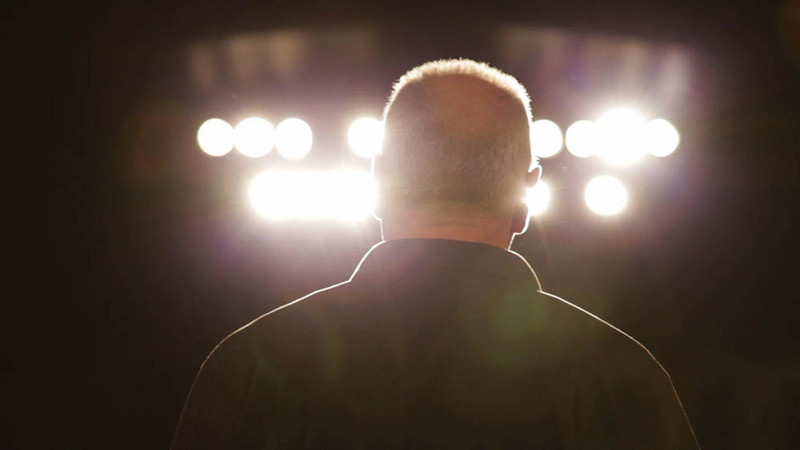Sven Johne
04 Nov - 17 Dec 2011
SVEN JOHNE
Greatest Show on Earth
4 November - 17 December, 2011
"In 1984, I went to the circus for the first time. It was a guest performance by the famous circus Probst, a magnificent show. had never seen such a thing before. Gravity seemed overcome here and wild animals were obedient and gentle. In 2011, this circus is touring again, from the beginning of March until mid-November. This is its 66th tour. This time the tour leads through all of East Germany, to more
than 50 cities and villages, about 4,000 kilometers. I am going to follow this circus. I will travel to each city and each village – but only just after the big top has been packed up. I won't be there until the grounds are already empty again." (Sven Johne, February 2011)
The traditional image of the 'traveling circus' being connected to childhood memories and narratives by the parents – a time before the 'real life' – seems to be an anachronism. However, it can still mean the potential promise of 'happiness'. In his exhibition "Greatest Show on Earth" Sven Johne takes up this reference directly and develops it in the sense of a metaphor of existence. The 'Higher, Faster, Further' of the 'circus system' have become buzz words of a social mind set, whose lust for sensation, luxury and speculation benefits is more and more accompanied by a feeling of (inner) emptiness. Sven Johne traces this phenomena in his well concerted ensemble of new works, which are set into relation to each other like pictorial, reduced to the essential allegories. The photographed laconicism of abandoned circus sites (Following the Circus, 2011) intertwine with the eternal promise of pure gold (El Dorado, 2011) or the visual splendor of floribunda (Roses from Africa, 2011) that are transported with high logistic effort from the remotest parts of the world to in order to be only marketable in the short moment of their blossom. At the same time a compere in endless loop (Greatest Show on Earth, 2011) that announces one sensation after the other but who sets his audience rather at unease when listened to closely.
The works' special quality is their directness – developed without additional text or incisive visuality each one of them functions itself as trigger for a direct examination of their subject. Together they question in "Greatest Show on Earth" the quality of collective ideas. Do they inhere in their utopian potential at the same time the core for self-destruction and agony?
Greatest Show on Earth
4 November - 17 December, 2011
"In 1984, I went to the circus for the first time. It was a guest performance by the famous circus Probst, a magnificent show. had never seen such a thing before. Gravity seemed overcome here and wild animals were obedient and gentle. In 2011, this circus is touring again, from the beginning of March until mid-November. This is its 66th tour. This time the tour leads through all of East Germany, to more
than 50 cities and villages, about 4,000 kilometers. I am going to follow this circus. I will travel to each city and each village – but only just after the big top has been packed up. I won't be there until the grounds are already empty again." (Sven Johne, February 2011)
The traditional image of the 'traveling circus' being connected to childhood memories and narratives by the parents – a time before the 'real life' – seems to be an anachronism. However, it can still mean the potential promise of 'happiness'. In his exhibition "Greatest Show on Earth" Sven Johne takes up this reference directly and develops it in the sense of a metaphor of existence. The 'Higher, Faster, Further' of the 'circus system' have become buzz words of a social mind set, whose lust for sensation, luxury and speculation benefits is more and more accompanied by a feeling of (inner) emptiness. Sven Johne traces this phenomena in his well concerted ensemble of new works, which are set into relation to each other like pictorial, reduced to the essential allegories. The photographed laconicism of abandoned circus sites (Following the Circus, 2011) intertwine with the eternal promise of pure gold (El Dorado, 2011) or the visual splendor of floribunda (Roses from Africa, 2011) that are transported with high logistic effort from the remotest parts of the world to in order to be only marketable in the short moment of their blossom. At the same time a compere in endless loop (Greatest Show on Earth, 2011) that announces one sensation after the other but who sets his audience rather at unease when listened to closely.
The works' special quality is their directness – developed without additional text or incisive visuality each one of them functions itself as trigger for a direct examination of their subject. Together they question in "Greatest Show on Earth" the quality of collective ideas. Do they inhere in their utopian potential at the same time the core for self-destruction and agony?

